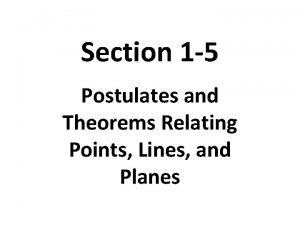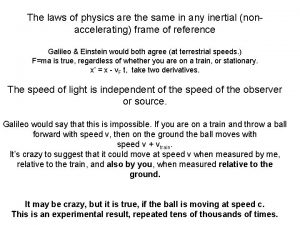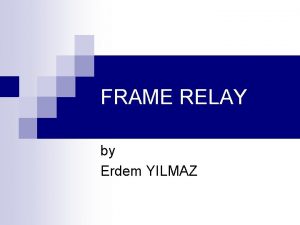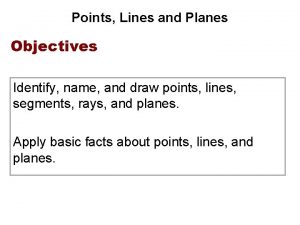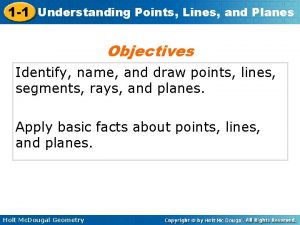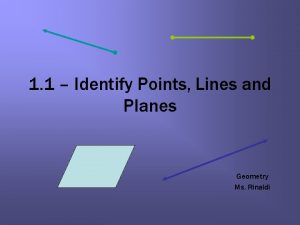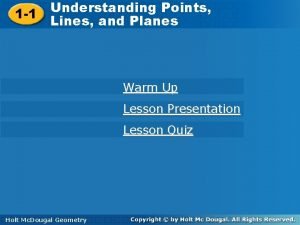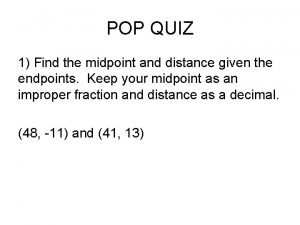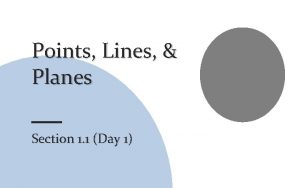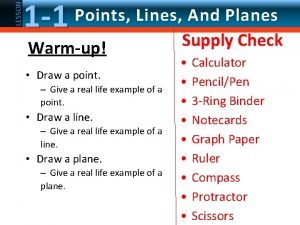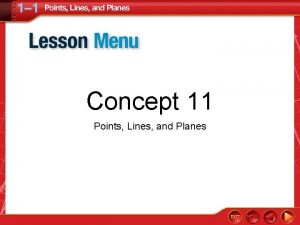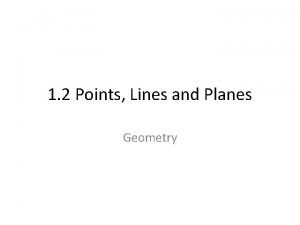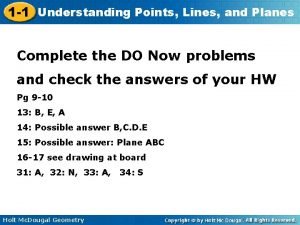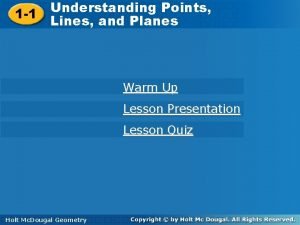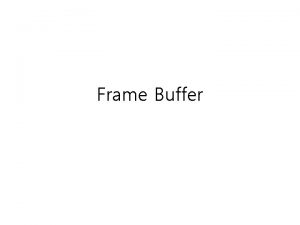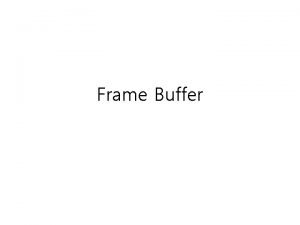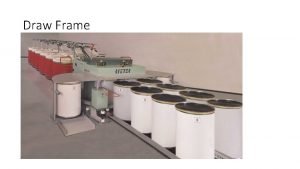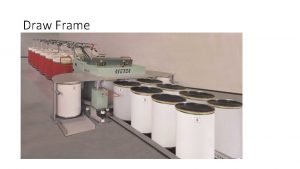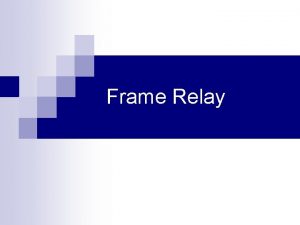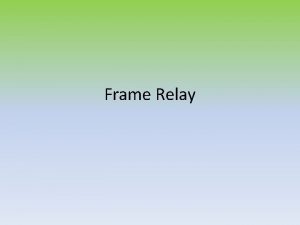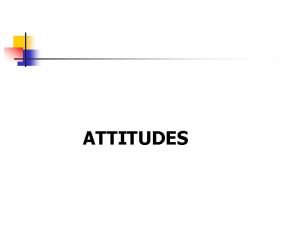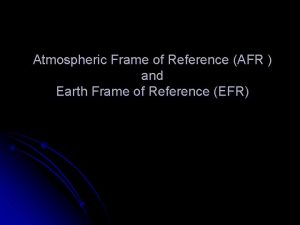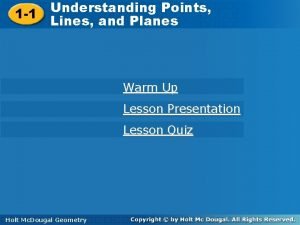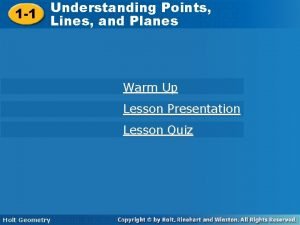Attitudes of Planes and Lines Frame of Reference

























- Slides: 25

Attitudes of Planes and Lines

Frame of Reference Always need to be thinking in 3 dimensions

The Brunton Compass • ~$250 to replace • you are responsible for your compass!

The Brunton Compass

Azimuth and Quadrant on Map 315° 045° N 45°W N 45°E 225° 135° S 45°W S 45°E Azimuth – measured in 0 to 360 degrees from true north in clockwise Quadrant – measured in 90 degree increments either from N or S to E or W

Azimuth and Quadrant on Compass East and West are reversed! In azimuth ring, 0 to 360 degrees are marked from true north counterclockwise

Earth’s Magnetic Field physically North Pole South Pole By definition, North Magnetic Pole is the wandering point on the Earth’s surface where the Earth’s magnetic field points vertically downwards. So it is still near the geographic north pole.

Magnetic Declination • your compass needs to be adjusted for the magnetic declination in the area in which you are using it • declination = 15˚

Adjustment to Compass 0 Declination 15 East Declination 15 West Declination

Planes and Lines • Planar Features: Bedding, fractures, fault planes, dikes • Linear Features: Grooves and streaks on a surface, intersections of two planar features, fold hinge lines

Linear Features lineations

Attitudes of Planes and Lines • Planes: described by strike and dip • Lines: described by trend and plunge

Strike • Strike Line A horizontal line in the plane • Strike the angle between the strike line and true north • Measured in azimuth or quadrant

Dip • Dip Line: A line in the plane perpendicular to the strike line • Dip (Dip angle): the angle from a horizontal down to the dip line in a vertical plane • Measured from 0– 90 degrees • Dip Direction: Always need to be specified as downdip

Apparent Dip • occurs when the dip of a plane is measured oblique to strike

Measuring Planes • when your compass is leveled horizontally along an inclined plane, it measures the strike of that plane

Measuring Planes Cont…

Right Hand Rule

Sighting

Recording Strike and Dip • strike is recorded first, then dip S 85ºE, 23ºSW 095º, 23ºSW strike dip angle dip direction

Trend (Bearing) • Trend Line A line orthogonally projected onto a horizontal plane • Trend the angle between the trend line and true north • Measured in azimuth or quadrant

Plunge • plunge: the angle that a line makes with respect to a horizontal plane as measured in a vertical plane • measured from 0 – 90 degrees

Rake or Pitch • the angle between a lineation and the horizontal line measured in the plane where the line occurs

Measuring Lines trend plunge

Recording Linear Features • Plunge is recorded first, then trend 35º, S 66ºW 35º, 246º plunge trend
 A plane contains at least _____ point/s
A plane contains at least _____ point/s Frame of reference jacqui and aaron schiff
Frame of reference jacqui and aaron schiff Inertial frame of reference
Inertial frame of reference Inertial frame of reference
Inertial frame of reference Field of experience adalah
Field of experience adalah Frame by frame animation programs
Frame by frame animation programs Pengertian animasi frame by frame
Pengertian animasi frame by frame Risanuri hidayat
Risanuri hidayat Frame relay frame format
Frame relay frame format Reference node and non reference node
Reference node and non reference node Reference node and non reference node
Reference node and non reference node Examples of points lines and planes
Examples of points lines and planes Lines in space
Lines in space Plane geometry real life example
Plane geometry real life example Lesson 1-1 understanding points lines and planes
Lesson 1-1 understanding points lines and planes 1-1 understanding points lines and planes
1-1 understanding points lines and planes Examples of points lines and planes
Examples of points lines and planes Lesson 1-1 understanding points lines and planes
Lesson 1-1 understanding points lines and planes Midpoint formula quiz
Midpoint formula quiz Worksheet 1-1 points lines and planes day 1
Worksheet 1-1 points lines and planes day 1 Worksheet 1-1 points lines and planes day 1
Worksheet 1-1 points lines and planes day 1 Example of a point
Example of a point How many planes appear in the figure
How many planes appear in the figure 1-2 points lines and planes
1-2 points lines and planes 1-1 understanding points lines and planes answer key
1-1 understanding points lines and planes answer key 1-1 understanding points lines and planes
1-1 understanding points lines and planes
